REVIEW OF THE FASTED AND FED STATES
Click The Image
THE END OF A FAST
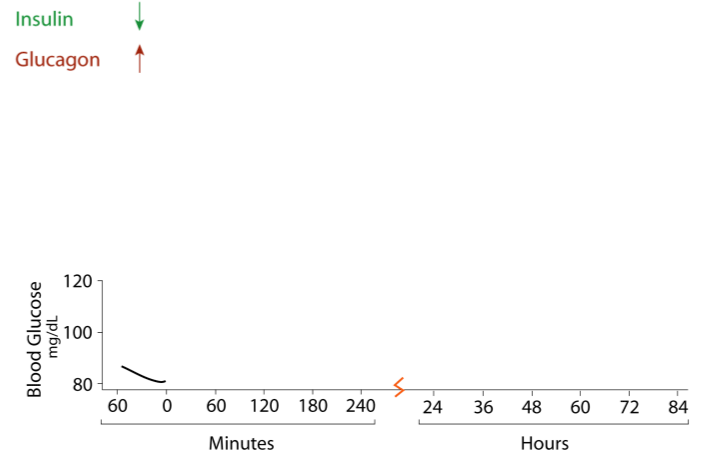
Glucagon predominates, blood glucose has decreased toward the lower end of the normal range — this could be an overnight fast. The intestine is empty. Degradation of the body's stored reserves of glycogen and triacylglycerol, and gluconeogenesis, mainly from amino acids derived from the degradation of proteins, glycerol and lactate, provide the sources of energy. The body is in the catabolic state.
EATING A MEAL
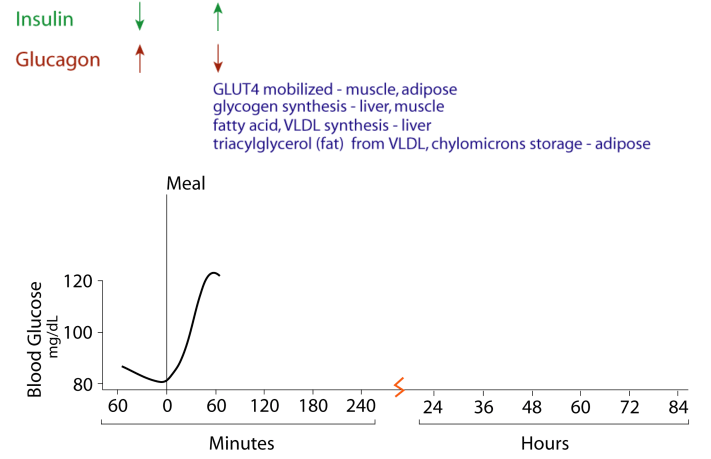
Eating a meal marks the end of a fast. As glucose is absorbed from the intestine into the blood, glucagon levels decline and insulin levels raise. Dietary molecules from the intestine are used for energy production and molecules in excess of current needs are stored as glycogen and triacylglycerols. Insulin promotes the clearance of dietary glucose from the blood by mobilizing GLUT4 to the plasma membrane in muscle and adipose tissues. The body is in the anabolic state.
POST-PRANDIAL

During the post-prandial state the contents of the intestine are absorbed and the amount of nutrients entering the blood decreases. As a result of the clearance of glucose from the blood, insulin secretion by the pancreas declines and glucagon secretion begins to increase. This is a transition between the fed — anabolic — and fasted — catabolic — states.
POST-ABSORPTIVE
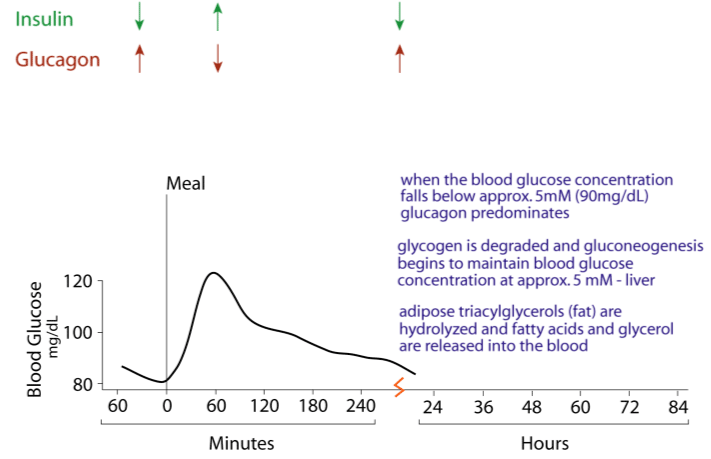
All the contents of the intestine from the previous meal have been absorbed and the intestine is now empty. The body is in the catabolic state in which glucagon predominates. Stored energy reserves are mobilized to provide energy for body functions.
PROLONGED FAST
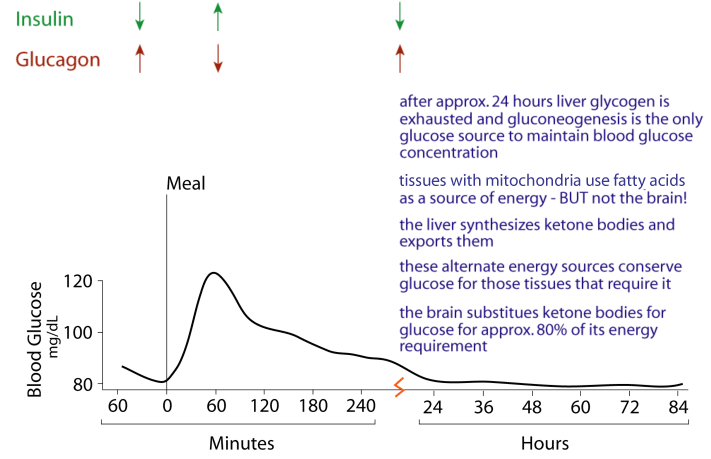
Liver glycogen is exhausted after 24 -30 hours of a prolonged fast, and gluconeogenesis is the only source of glucose. Fatty acids and ketone bodies synthesized from them by the liver become major sources of energy. As the prolonged fast continues beyond approximately 3 days, the brain uses ketone bodies for approximately 80% or its energy needs. This reduces the requirement for glucose and decreases the need to degrade tissue proteins as a source of carbon skeletons for gluconeogenesis. Muscle reduces its use of ketone bodies in favor of an increased use of fatty acids, thereby increasing the amount of ketone bodies available to the brain.
DIABETES
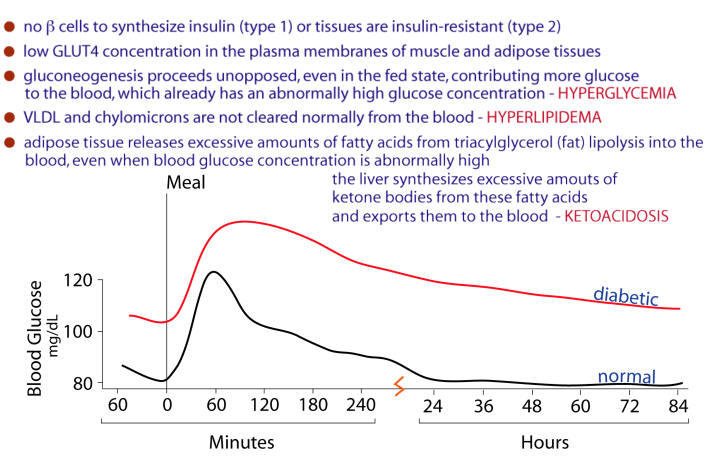
The loss of pancreatic β cells results in type 1 diabetes. The untreated diabetic is constantly in the catabolic state. Gluconeogenesis, breakdown of triacylglycerols and degradation of tissue protein proceed unabated. The clearance of glucose and dietary triacylglycerols from the blood are substantially reduced because of the lack of insulin. The liver produces ketone bodies in excess of their use by tissues (mainly the brain) so they accumulate in the blood, reducing its pH. In type 2 diabetes, tissues become resistant to the action of insulin. As a result, glucose and dietary triacylglycerols are not cleared form the blood and the pancreas attempts to compensate for the increased blood glucose by secreting more insulin. If type 2 diabetes is not treated, the pancreatic β cells eventyally die.
GLUCOSE IS TOXIC
Click The Image
GLUCOSE IS REACTIVE

The aldehyde oxygen at carbon one is reactive.
FORMATION OF THE ALDAMINE ADDUCT
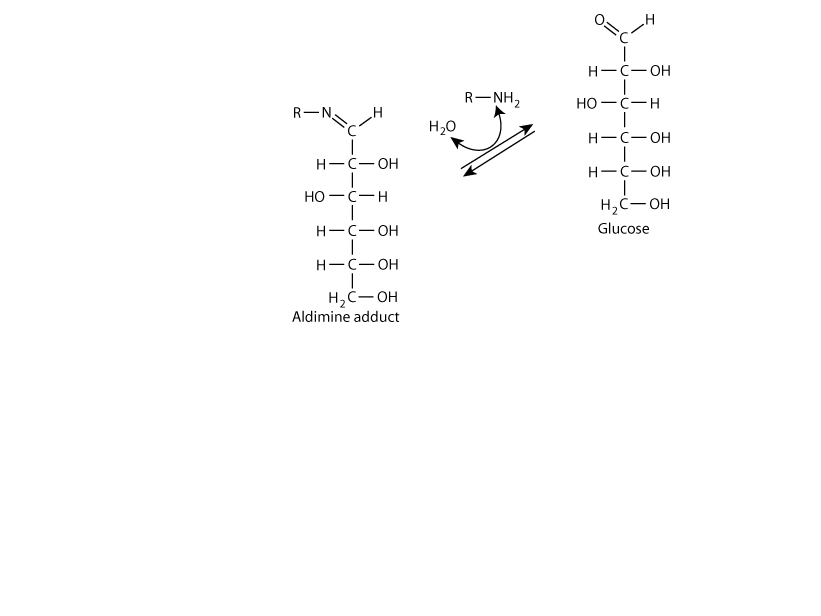
Glucose forms a Schiff base with the amino nitrogen of proteins. At physiological pH the amino group is usually protinated, but in equilbrium with its unprotenated form. Formation of the Schiff base is reversible.
THE KETAMINE ADDUCT
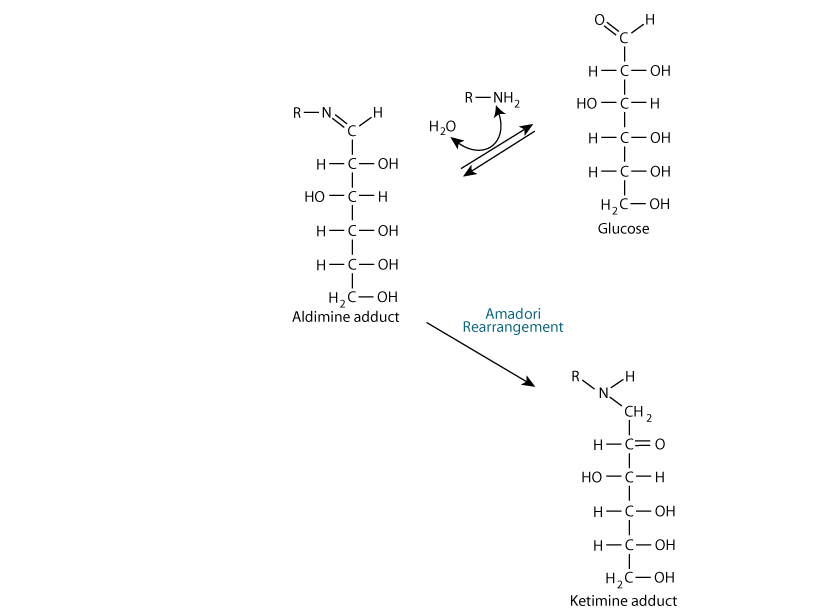
The double bond isomerizes to form a ketamine adduct by a reaction mechanism referred to as an “Amadori rearrangement”. The reaction is irreversible.
THE KETAMINE IS REACTIVE
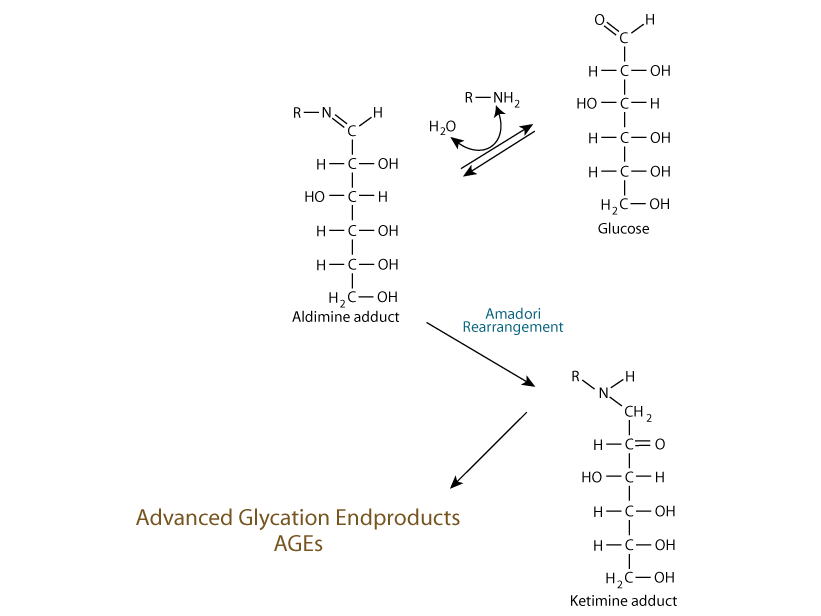
The ketimine product is reactive and makes crosslinks with other similar molecules, eventually yielding products known as “advanced glycation endproducts” — AGEs. The entire reaction is known as "non-enzymatic glycation". The color of isolated AGEs is brown and the reaction is sometimes referred to as “non-enzymatic browing”.
ROASTING A TURKEY FORMS AGEs FROM GLUCOSE IN THE SKIN
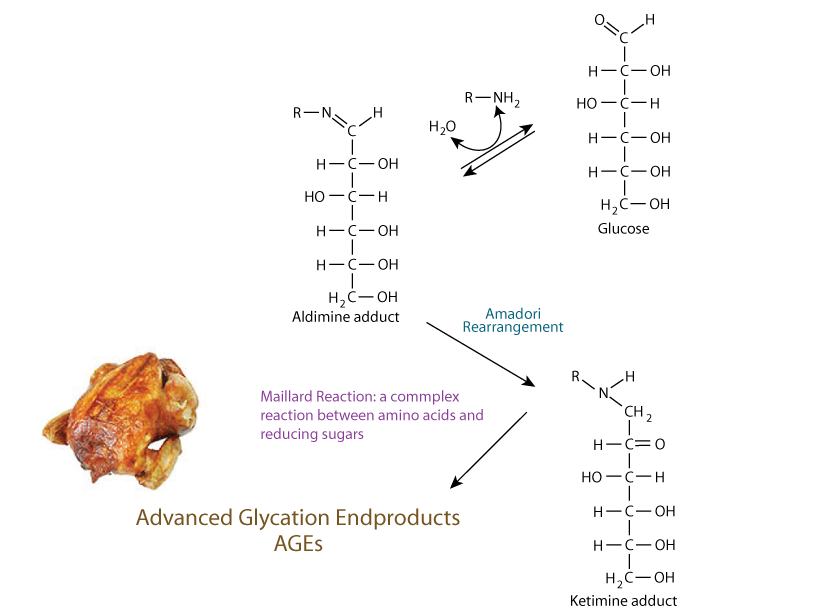
Glucose in the skin of a turkey (chicken, etc.) undergoes the same reaction with proteins in the skin to form AGEs during roasting that, in part, gives the turkey its golden color. The heat of the oven speeds up the reaction, althouh the reaction mechanism is the same as occurs in the body. The reaction is known as the “Millard Reaction” after the French physician and chemist Louis-Camille Maillard.
DIABETES
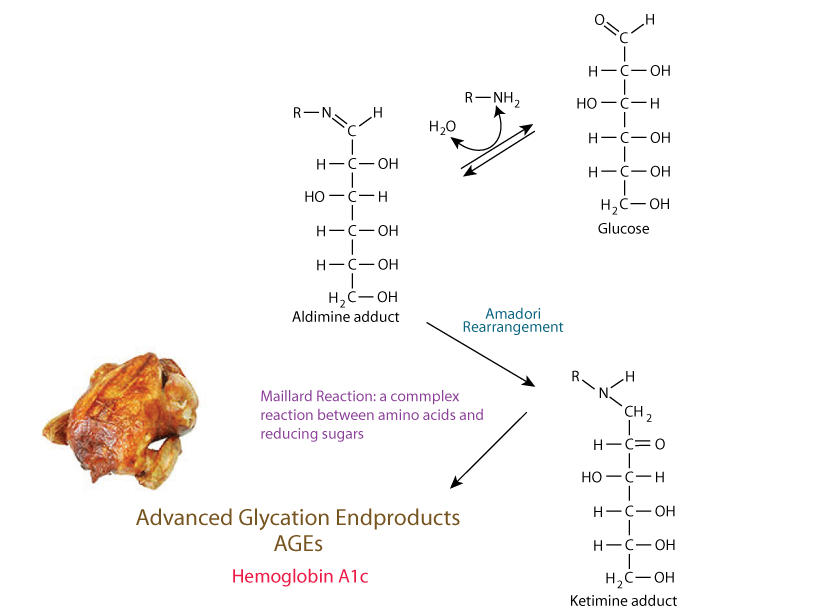
Hemoglobin A1c is a glycated form of hemoglobin that forms normally at a relatively low rate but at an increased rate if blood glucose is high, as in diabetes. The AGEs that form are responsible for the destruction of blood vessel walls, the kidney and the retina in uncontrolled diabetics. The amount of hemoglobin A1c in the blood is an indication of the extent of damage caused by the non-enzymatic glycation (browing) reaction.
DIABETES
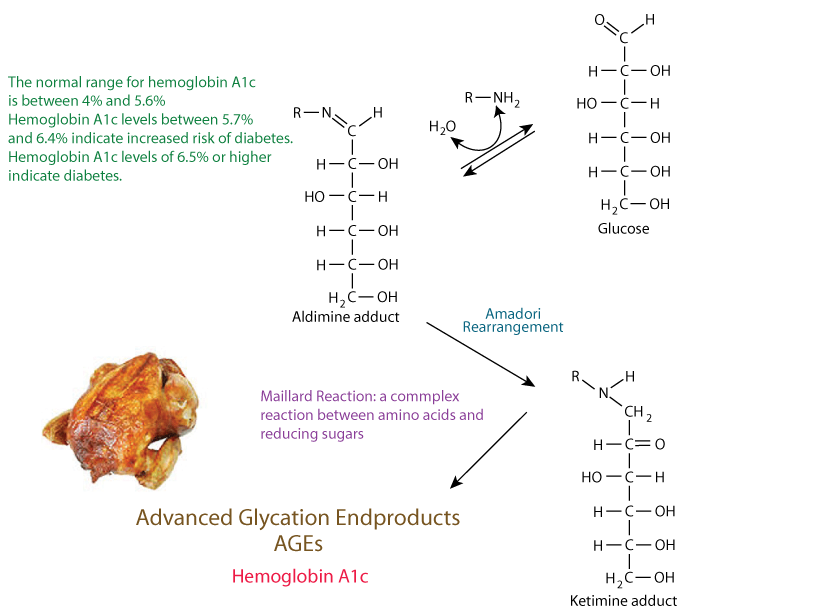
Hemoglobin A1c is a glycated form of hemoglobin that forms normally at a relatively low rate but at an increased rate if blood glucose is high, as in diabetes. The AGEs that form are responsible for the destruction of blood vessel walls, the kidney and the retina in uncontrolled diabetics. The amount of hemoglobin A1c in the blood is an indication of the extent of damage caused by the non-enzymatic glycation (browing) reaction.